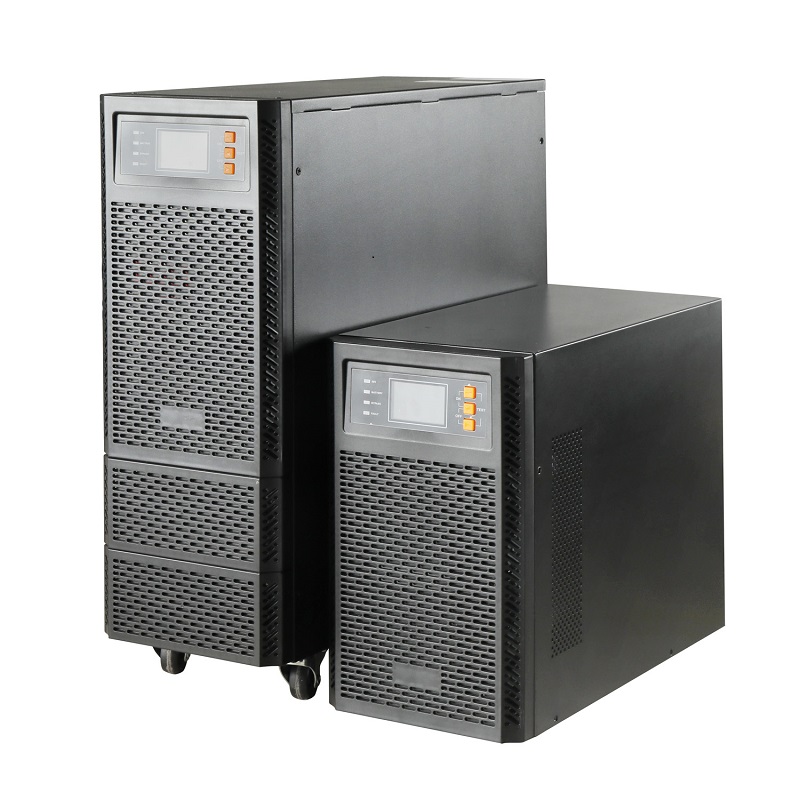Protecting your own or your company's information and electronic devices (computers, servers) is essential. There are different makes and models of UPS (uninterruptible power systems), but with so many options in one it can feel a bit lost, and I don't go for the better option or worse, the wrong UPS system for your application. need; that's why we've prepared a guide with these 10 key questions to choose a UPS system that's right for you.

A UPS (Uninterruptible Power Supply System) is a device that, thanks to its batteries, can provide power to all connected devices for a limited time during a power outage, which leads to the first question.
1. How critical is the load (equipment) to be protected?
There are three types of UPS:
UPS backup type: power supply takes about 5 milliseconds. Up to 1.2kVA, recommended for home use only
Line-interactive UPS: Power takes 2 - 4 milliseconds. Up to 3kva, recommended for home or office use
Double Conversion On-Line UPS: On-line all the time, supplying power immediately when a failure occurs. It can reach more than 1000kva and is suitable for families, enterprises, industries, hospitals, etc.
2. What level of protection do you want your electronic equipment to have?
UPS backup type: provide necessary protection: prevent power failure, instantaneous low voltage and voltage peak
Online interactive UPS: Provide professional protection: prevent power failure, instantaneous low voltage, voltage peak, long-term low voltage and long-term overvoltage.
Double conversion online UPS: Provides full protection against the 9 most common electrical faults (blackout, low instantaneous voltage, low continuous voltage, high instantaneous voltage, high continuous voltage, voltage peaks, frequency variations, electrical noise and harmonic distortion). Performs a double conversion of electrical energy, converting it to continuous and then to alternating current, always supplying its equipment with a regulated voltage (+/- 1% of nominal voltage); moreover, in case of overload or internal problems, it With automatic bypass, the supply of the load is always guaranteed.
3. How many watts of actual power and phase does your device require?
To calculate power requirements, add the wattage (in watts) of each device, which can be aided by the device's nameplate or manufacturer's documentation. In amps, multiply by the rated AC voltage used by the equipment to calculate power in watts.
The stage of the device can be 1, 2 or 3 (make sure to correctly identify the number of stages).
IMPORTANT NOTE: It is recommended not to connect equipment that exceeds 85% of the total load of each UPS model; by allowing your UPS to operate below its maximum, you increase its lifespan and have better protection for critical loads.
4. What is the voltage of the power supply
Note that the UPS plug matches your electrical outlet. There are different voltages and electrical contacts depending on the key application (home, office, industrial), make sure you know exactly what you have.
5. How many power outlets and what type of power outlets does the UPS need to be connected to?
It is important that the UPS is purchased with more outlets to ensure room for future growth, and it is also important to consider exactly what kind of outlets the UPS needs.
Remember not to overload the UPS, and remember that it is not being utilized more than 85% of its capacity.
6. How long does the backup of UPS protection equipment take?
All UPS are factory programmed with a standard backup time of 5 minutes; please note that if your unit requires more time, you will want to consider purchasing an external battery pack.
7. Where will the UPS be installed?
UPS come in a wide variety of sizes and form factors. Therefore, we must ensure that the place where the UPS is installed is prepared to meet all the space and environmental requirements it requires
Desktop Model: Compact, fits on a desk, takes care of computer and peripherals.
Tower Models: They are perpendicular to the ground and are used for network workstation applications.
Rack-mount models: Can be installed in a standard 19-inch cabinet, typically used in server and networking applications.
Larger models: These can even support data centers, ATMs, and more.
IMPORTANT NOTE: Keep in mind that if you plan to install a UPS with battery packs, consider the space required.
8. Does your device require a pure sine wave?
Waveform senoidal sensitive electronics only needs input source to be smoother and cleaner, to avoid equipment connected to the system UPS overheating, operating failure or premature failure and guarantee the effective operation of the system, which helps to reduce energy consumption and save electricity cost.
9. How efficient do you want the UPS to be?
The more efficient the UPS power supply, the higher the cost. If you don’t know how to choose a suitable UPS, you can also refer to my previous article for answers.
10. Are there plans for future growth?
If there is a plan for growth, there are two approaches:
About the size of UPS
Purchase modular equipment that can increase capacity as needed
Remember to always consult a qualified expert when making your final decision. This guide is suitable for home, office or data center. For industry, additional measures should be taken, such as energy analysis, always supported by experts.
 English
English
 Español
Español
 Português
Português
 русский
русский
 français
français
 日本語
日本語
 Deutsch
Deutsch
 Tiếng Việt
Tiếng Việt
 Italiano
Italiano
 Nederlands
Nederlands
 ไทย
ไทย
 Polski
Polski
 한국어
한국어
 Svenska
Svenska
 magyar
magyar
 Malay
Malay
 বাংলা
বাংলা
 Dansk
Dansk
 Suomi
Suomi
 हिन्दी
हिन्दी
 Pilipino
Pilipino
 Türk
Türk
 Gaeilge
Gaeilge
 عربى
عربى
 Indonesia
Indonesia
 norsk
norsk
 اردو
اردو
 čeština
čeština
 Ελληνικά
Ελληνικά
 Українська
Українська
 Javanese
Javanese
 فارسی
فارسی
 தமிழ்
தமிழ்
 తెలుగు
తెలుగు
 नेपाली
नेपाली
 Burmese
Burmese
 български
български
 ລາວ
ລາວ
 Latine
Latine
 Қазақ
Қазақ
 Euskal
Euskal
 Azərbaycan
Azərbaycan
 slovenský
slovenský
 Македонски
Македонски
 Lietuvos
Lietuvos
 Eesti Keel
Eesti Keel
 Română
Română
 Slovenski
Slovenski
 Српски
Српски
 Беларус
Беларус


